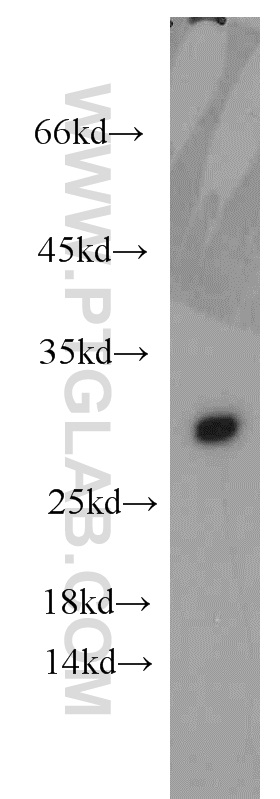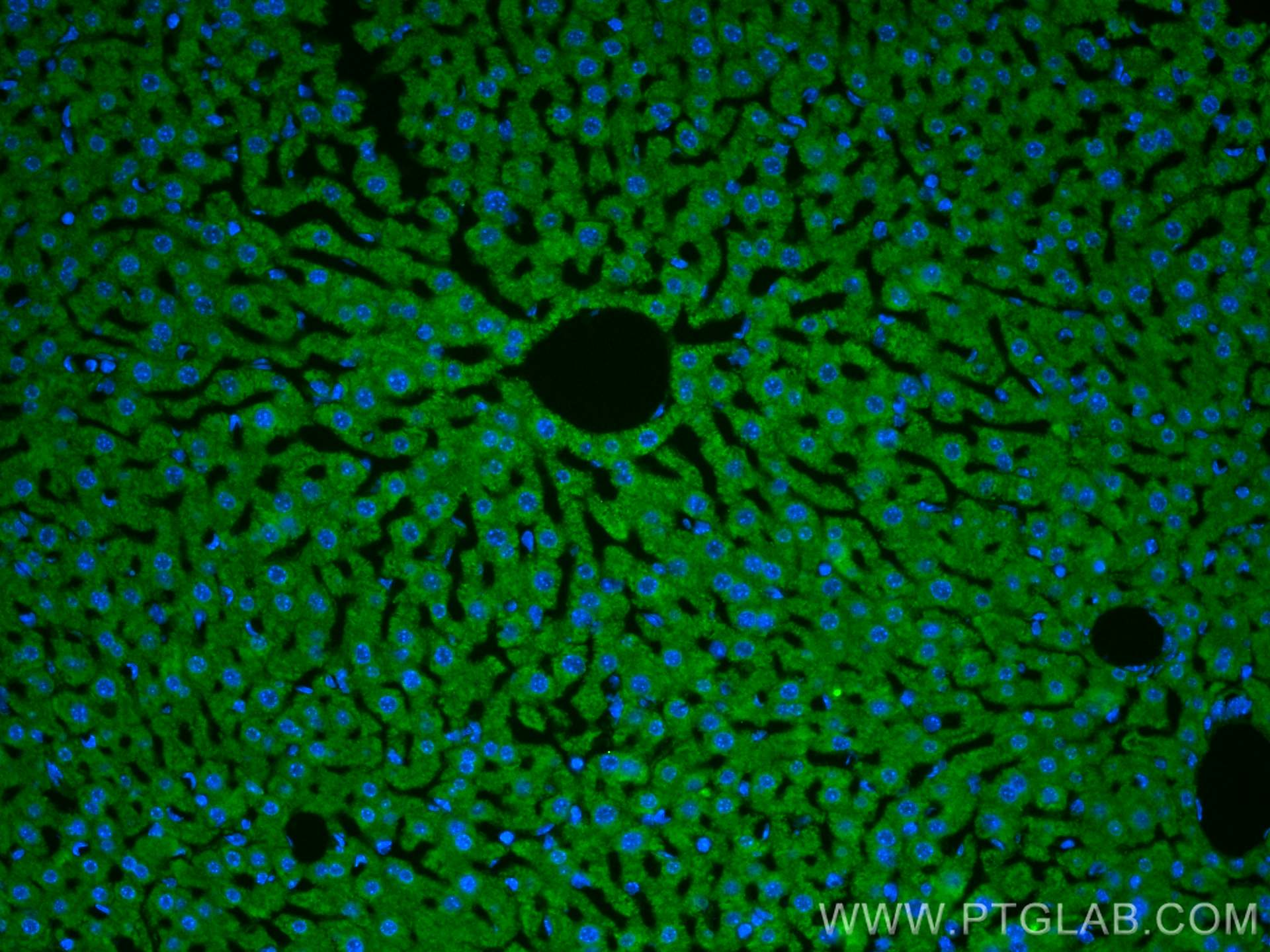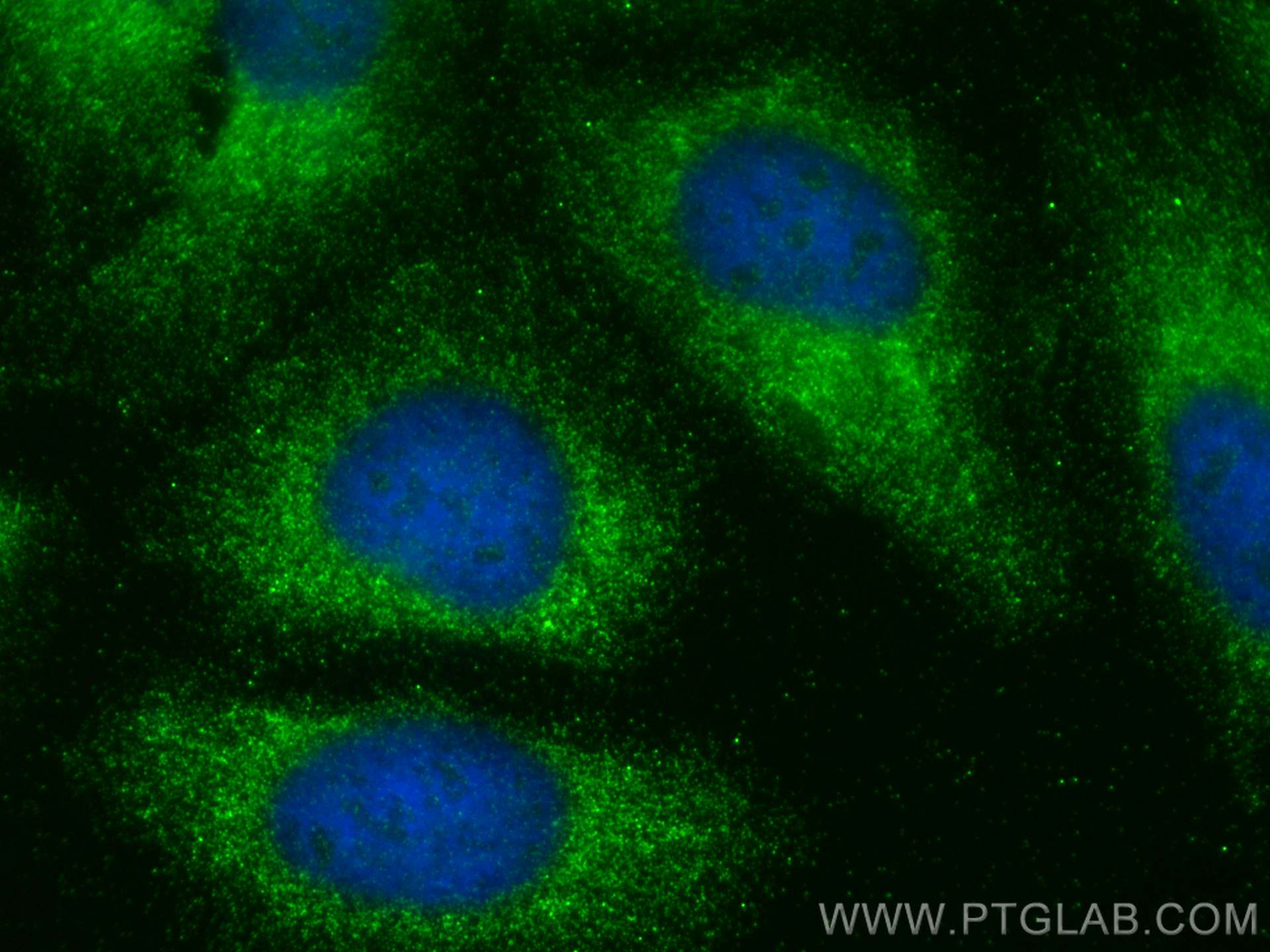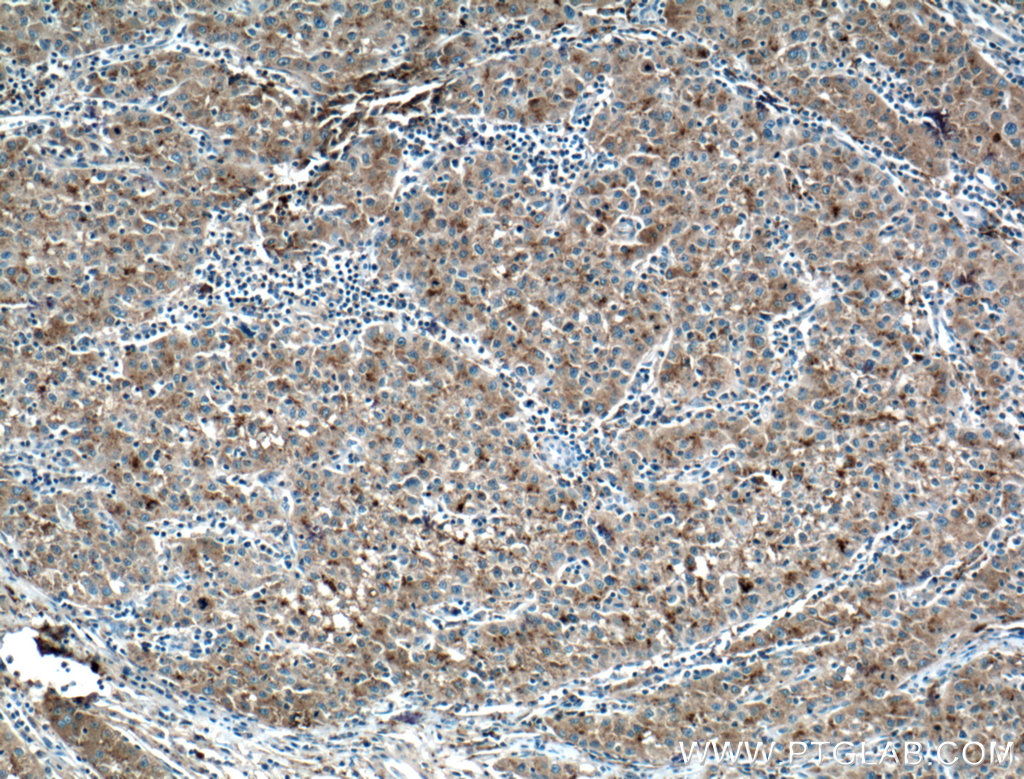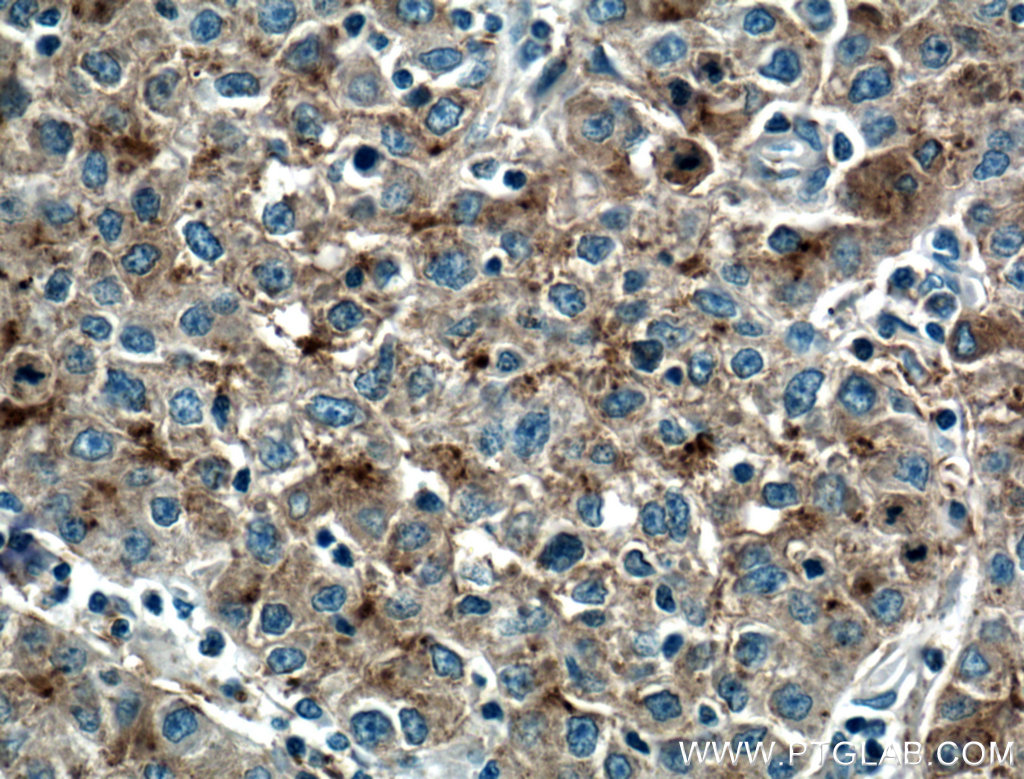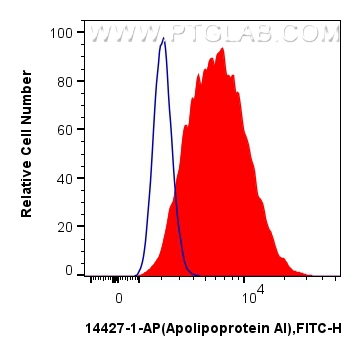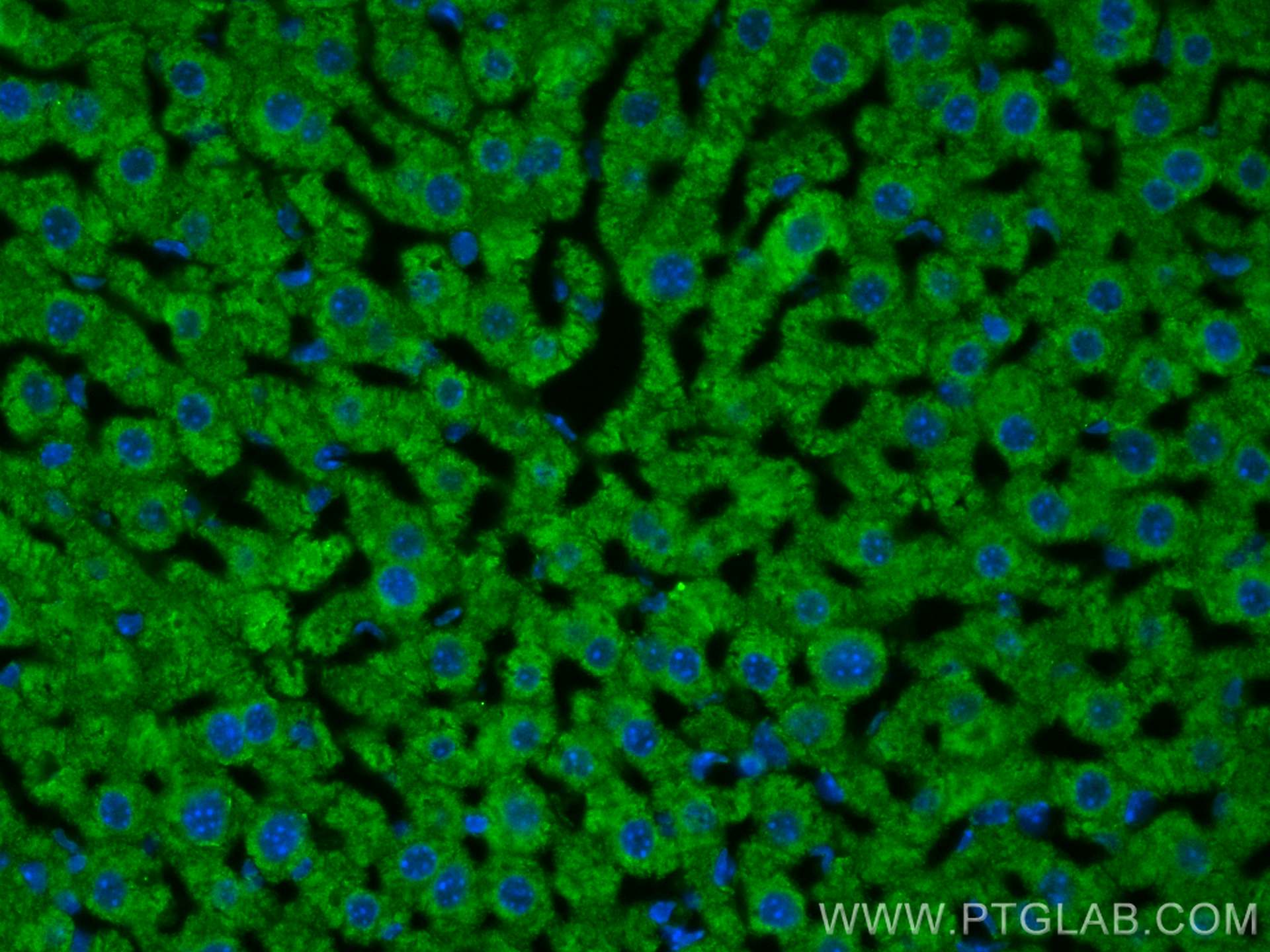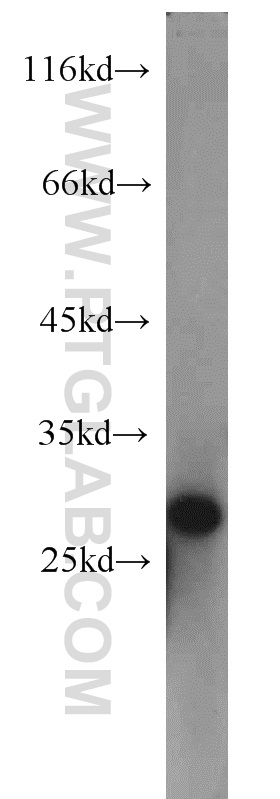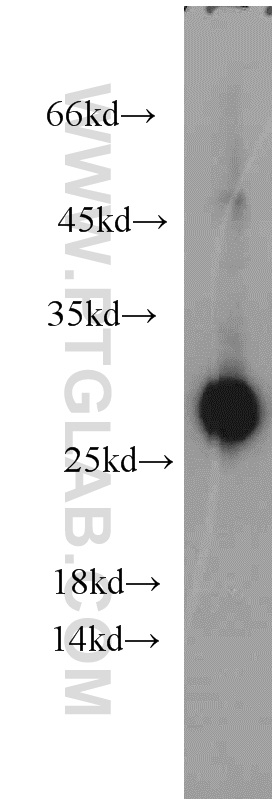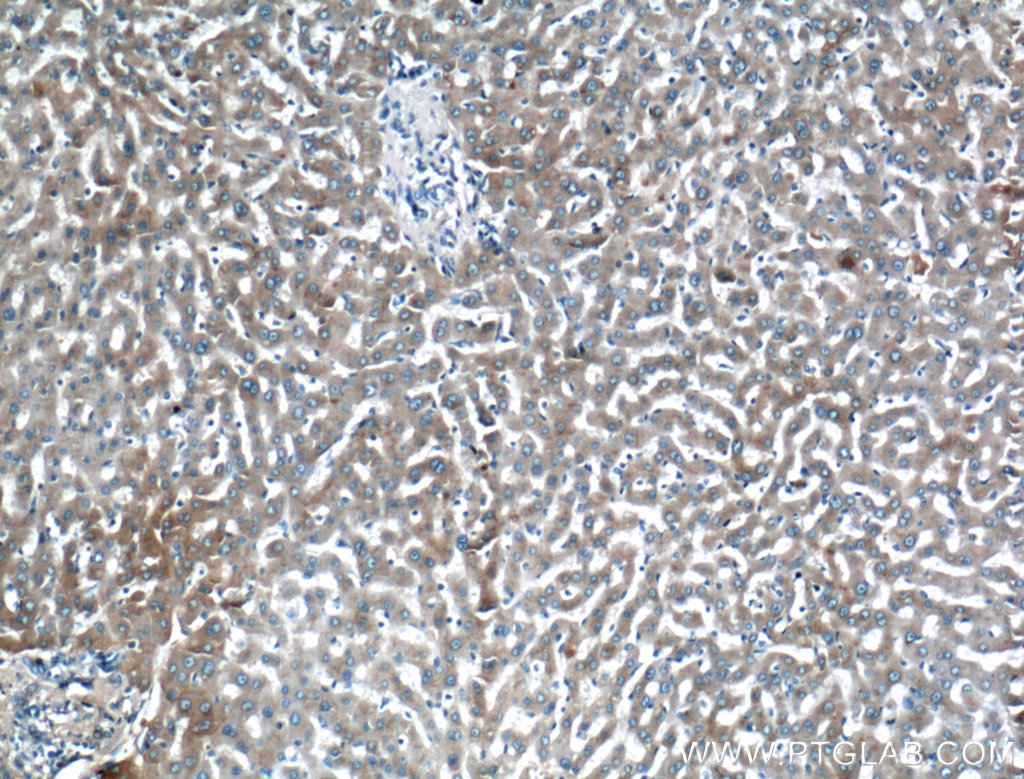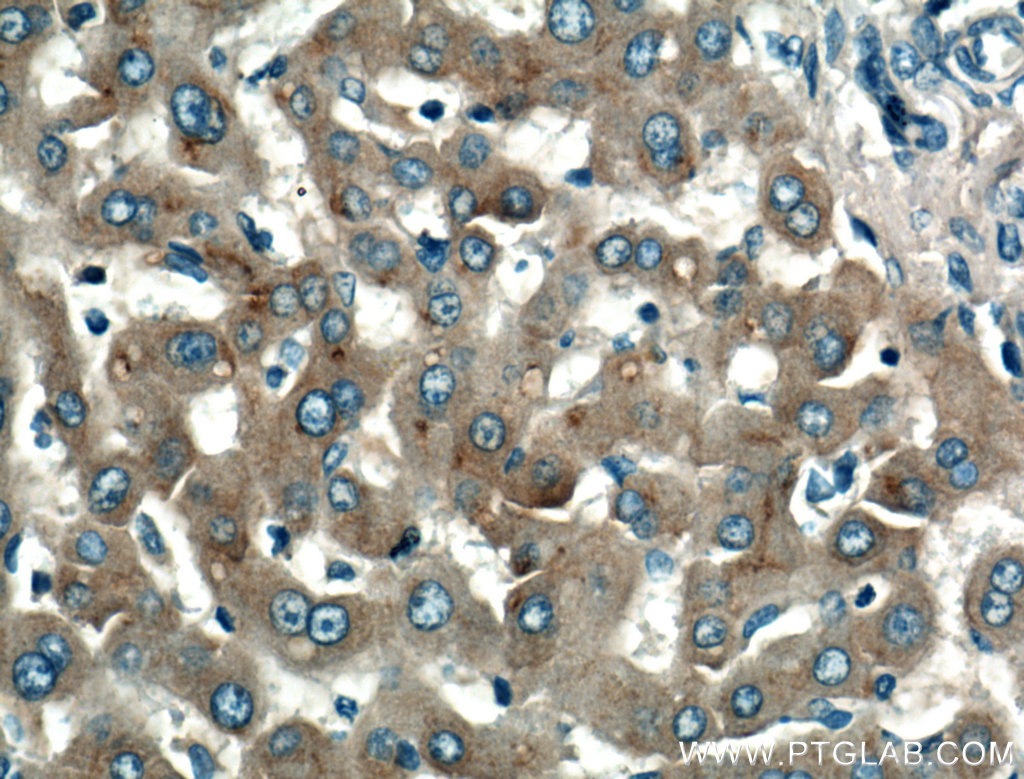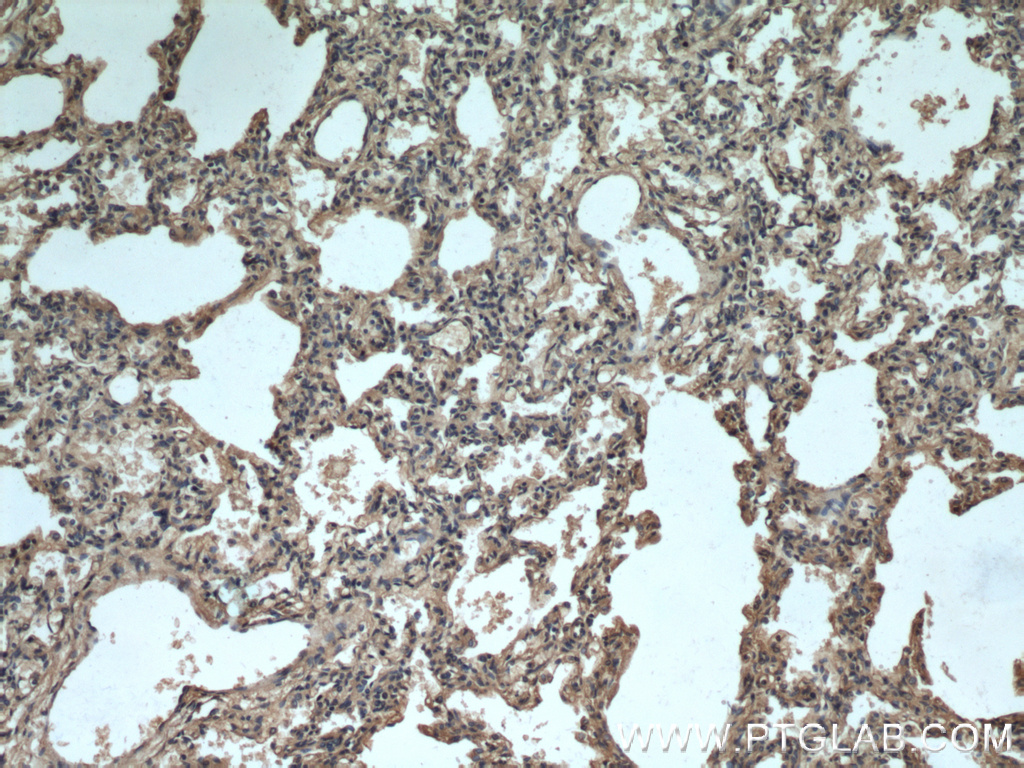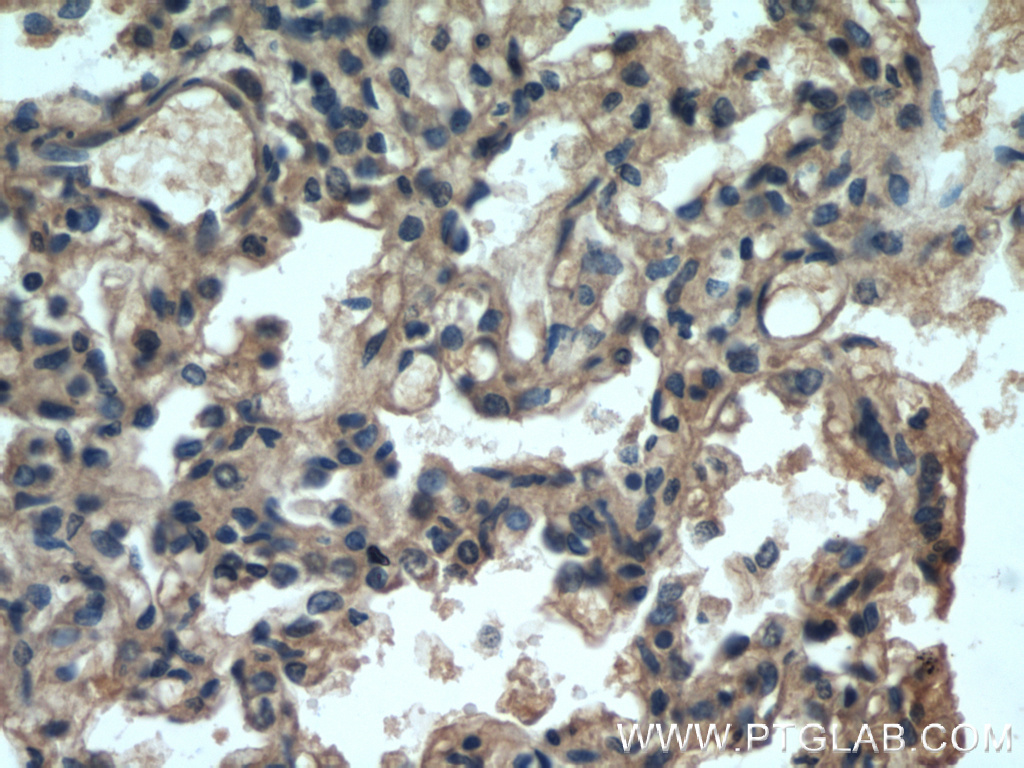验证数据展示
经过测试的应用
| Positive WB detected in | human blood tissue, human brain tissue, human plasma, human ileum tissue |
| Positive IHC detected in | human liver cancer tissue, human liver tissue, human lung tissue Note: suggested antigen retrieval with TE buffer pH 9.0; (*) Alternatively, antigen retrieval may be performed with citrate buffer pH 6.0 |
| Positive IF-P detected in | mouse liver tissue |
| Positive IF/ICC detected in | HeLa cells |
| Positive FC (Intra) detected in | HepG2 cells |
推荐稀释比
| 应用 | 推荐稀释比 |
|---|---|
| Western Blot (WB) | WB : 1:500-1:2000 |
| Immunohistochemistry (IHC) | IHC : 1:50-1:500 |
| Immunofluorescence (IF)-P | IF-P : 1:50-1:500 |
| Immunofluorescence (IF)/ICC | IF/ICC : 1:50-1:500 |
| Flow Cytometry (FC) (INTRA) | FC (INTRA) : 0.40 ug per 10^6 cells in a 100 µl suspension |
| It is recommended that this reagent should be titrated in each testing system to obtain optimal results. | |
| Sample-dependent, Check data in validation data gallery. | |
产品信息
14427-1-AP targets Apolipoprotein AI in WB, IHC, IF/ICC, IF-P, FC (Intra), IP, ELISA applications and shows reactivity with human, mouse samples.
| 经测试应用 | WB, IHC, IF/ICC, IF-P, FC (Intra), ELISA Application Description |
| 文献引用应用 | WB, IHC, IF, IP |
| 经测试反应性 | human, mouse |
| 文献引用反应性 | human, mouse |
| 免疫原 |
CatNo: Ag5793 Product name: Recombinant human APOA1 protein Source: e coli.-derived, PGEX-4T Tag: GST Domain: 19-267 aa of BC005380 Sequence: RHFWQQDEPPQSPWDRVKDLATVYVDVLKDSGRDYVSQFEGSALGKQLNLKLLDNWDSVTSTFSKLREQLGPVTQEFWDNLEKETEGLRQEMSKDLEEVKAKVQPYLDDFQKKWQEEMELYRQKVEPLRAELQEGARQKLHELQEKLSPLGEEMRDRARAHVDALRTHLAPYSDELRQRLAARLEALKENGGARLAEYHAKATEHLSTLSEKAKPALEDLRQGLLPVLESFKVSFLSALEEYTKKLNTQ 种属同源性预测 |
| 宿主/亚型 | Rabbit / IgG |
| 抗体类别 | Polyclonal |
| 产品类型 | Antibody |
| 全称 | apolipoprotein A-I |
| 别名 | APOA1, apolipoprotein A I, APOA 1, ApoA I, ApoAI |
| 计算分子量 | 31 kDa |
| 观测分子量 | 26-30 kDa |
| GenBank蛋白编号 | BC005380 |
| 基因名称 | APOA1 |
| Gene ID (NCBI) | 335 |
| RRID | AB_2056524 |
| 偶联类型 | Unconjugated |
| 形式 | Liquid |
| 纯化方式 | Antigen affinity purification |
| UNIPROT ID | P02647 |
| 储存缓冲液 | PBS with 0.02% sodium azide and 50% glycerol, pH 7.3. |
| 储存条件 | Store at -20°C. Stable for one year after shipment. Aliquoting is unnecessary for -20oC storage. |
背景介绍
ApoA1 is a major protein component of high density lipoproteins (HDL) which is associated with reversed cholesterol transport, lipid/cholesterol binding, lecithin/cholesterol acyltransferase (LCAT) activation and specific receptors binding. It is synthesized in the liver and small intestine. Defects of ApoA1 cause low HDL level and systemic non-neuropathic amyloidosis. Serum concentration of ApoA1 is inversely related to the risk of developing atherosclerosis. This antibody was generated against the C-terminal region of human ApoA1.
实验方案
| Product Specific Protocols | |
|---|---|
| IF protocol for Apolipoprotein AI antibody 14427-1-AP | Download protocol |
| IHC protocol for Apolipoprotein AI antibody 14427-1-AP | Download protocol |
| WB protocol for Apolipoprotein AI antibody 14427-1-AP | Download protocol |
| Standard Protocols | |
|---|---|
| Click here to view our Standard Protocols |
发表文章
| Species | Application | Title |
|---|---|---|
Science Enterically derived high-density lipoprotein restrains liver injury through the portal vein. | ||
Neuron Astrocytic ApoE reprograms neuronal cholesterol metabolism and histone-acetylation-mediated memory. | ||
J Control Release Lipid-mediated protein corona regulation with increased apolipoprotein A-I recruitment for glioma targeting | ||
Br J Cancer A new panel of pancreatic cancer biomarkers discovered using a mass spectrometry-based pipeline. | ||
Theranostics Exosome-mediated delivery of inflammation-responsive Il-10 mRNA for controlled atherosclerosis treatment | ||
Br J Pharmacol A novel apoA-I mimetic peptide suppresses atherosclerosis by promoting physiological HDL function in apoE-/- mice. |

